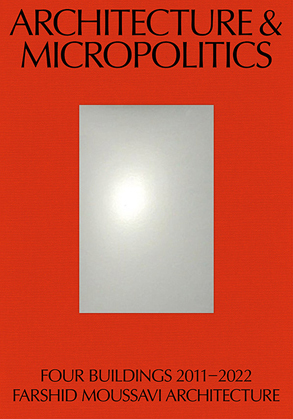This timely book seeks to dispel two widely held misconceptions: first, that architects are no longer central to the making of buildings and, second, that design is a linear process which begins with a fully formed architectural vision. Architect Farshid Moussavi argues that the temporality of architecture provides day-to-day practice with the potential to generate change. She proposes that we abandon determinism and embrace chance events and the subjective factors that influence practice in order to ground buildings in the micropolitics of everyday life.
Using four buildings designed by FMA, Moussavi’s London-based practice, Architecture & Micropolitics shows how the rhizomatic nature of their design process is combined with diligent research and an openness to elements of chance to fuel creativity and bend rules that would generate a merely functional building.
A substantial essay by Farshid Moussavi and an afterword by the philosopher Jacques Rancière are followed by detailed analyses of the Museum of Contemporary Art in Cleveland; Lot 19, the first new residential block to be built in the La Défense district of Paris in thirty years; the Folie Divine apartment building in Montpellier; and the Ismaili Center Houston, the first new building in the US which is dedicated to use by the Ismaili community. The book also features contributions by Iñaki Ábalos, Hans Ulrich Obrist, and Irénée Scalbert.
Architecture & Micropolitics is recommended for any professional and academic library. It is a surprising book which will be of value to anyone who is interested in the relationship between architecture and society.
Farshid Moussavi, OBE, RA, is an architect, Professor in Practice of Architecture at Harvard University’s Graduate School of Design, and former co-founder of Foreign Office Architects (FOA). She has published an influential series of books in conjunction with Harvard: The Function of Ornament (2006), The Function of Form (2009), and The Function of Style (2014).
